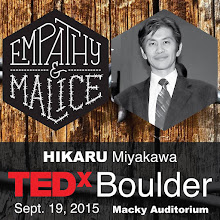Had Leonardo used the method written by Pliny to do with the technique involving the wax / encaustic and the heat, there maybe the smoke damage on the ceiling directly above the wall where Leonardo had attempted to paint.
Did Leonardo attempt to do the final "Burning-in" for the mural?
This process is crucial, for the reheating of the entire surface enables each layer to bind together, thus preventing the cracking or chipping. However, the temperature should not be too hot or too cold!
Leonardo may have thought that the enormous amount of heat may be required to do the "Burning-in" the paints to such enormous wall. I do not know whether Leonardo had used such method shown in the biographical portrayal of Leonardo in 1972 by the RAI production, but if that much heat was needed, he must have used and burnt a lot of woods causing the large amount of smoke. Of course, had it burnt well with the high heat, there could have been the less smoke. But since the record shows hat the paints began to run down the wall, the temperature may have been too hot, and it is possible that the smoke might have been permeating the room. It will be good to study the current ceiling forensically. If the interior, especially the ceiling, has not been restored since the time of Leonardo, the evidence of the smoke damage may still be there, and that may indicate to the area where the paints were applied. Since he used the heat to fix the already painted area, the location maybe determined below the smoke damage... or so.
Was the plaster surface moist and not completely dry? If so, that may have cause the wax to remain on the surface and not to get soaked into the wall. The soaking-in to the dry plaster could have helped preventing the paints to not run down the surface easily.
The reason behind Pliny's warning against the use of this technique on the wall may have been that the wall is vertical, and the things of weight, such as paints in the large quantity can run down easily and quickly, and there is not enough time to fix it to the vertical surface. Even if Leonardo had experimented and succeeded with the smaller scaled model, to determine the correct amount of the temperature required to "Burning-in" the paints on the much larger surface may not have been easy.
Likely that the temperature was too hot for the surface and the layers literally merged with each other making the color muddy. Unlike the smaller scaled murals, shire weight of the liquefied paint from the large vertical surface may have caused it to run down rapidly, thus destroying the painting.
Also, had he mixed any other elements to this vehicle made of wax, that may not only increased the weight of the paints but to have interfered with the chemical process for the drying.
FYI: http://en.wikipedia.org/wiki/The_Battle_of_Anghiari_(painting)







